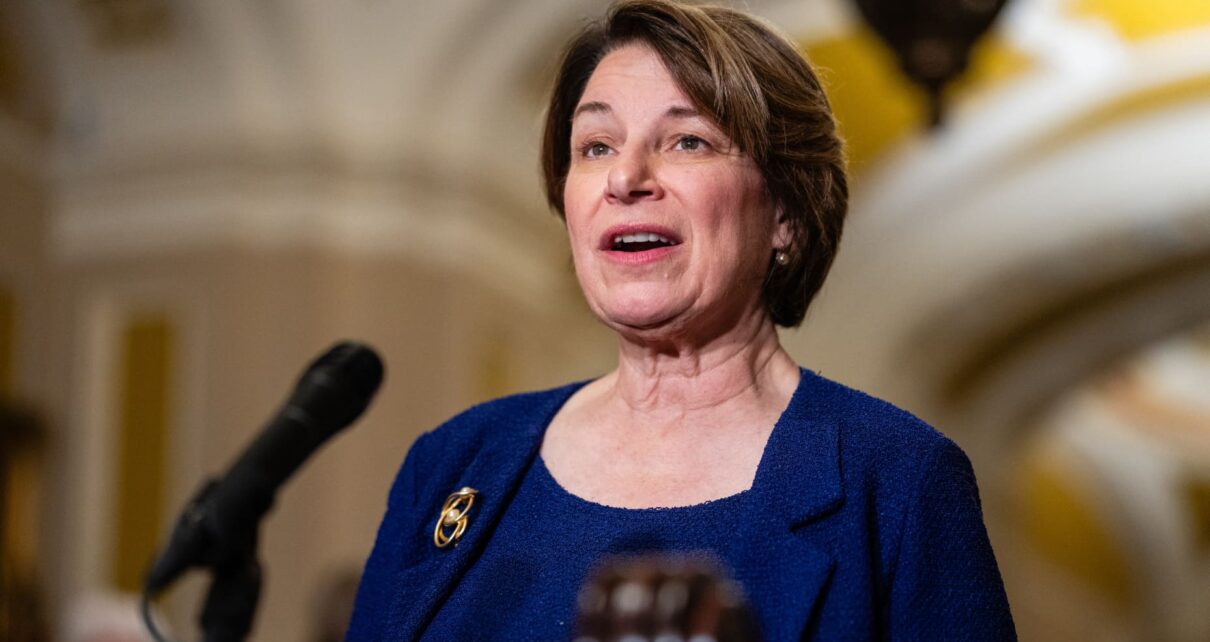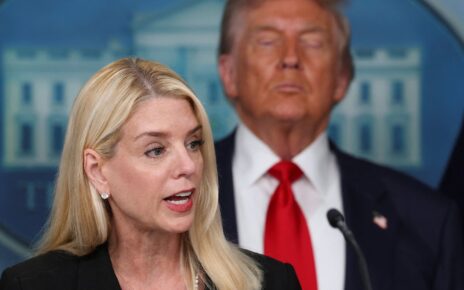A beloved Minnesota public servant was remembered as a relentless community organizer and a devoted mother, as the state faced a shocking act of violence that claimed the lives of Melissa Hortman and her husband, Mark. The tragedy unfolded in the early hours of Saturday, prompting a broad manhunt for a suspect identified by officials. The nation’s political landscape was also rattled by reports of another related attack, in which State Senator John A. Hoffman and his wife, Yvette, were wounded but alive after a separate shooting. Amid the chaos, Senator Amy Klobuchar reflected on Hortman’s decades of public service, underscoring the deep respect Hortman earned from Democrats and Republicans alike. The narrative that has emerged shows Hortman as a longtime Minnesota House member since 2005, a figure who balanced public life with family responsibilities and community outreach, knocking on doors across her district while raising two children. This intimate portrait of Hortman’s life stood in stark contrast to the violence that cut short her journey in politics, and Klobuchar’s remarks highlighted the personal bonds that transcend partisan divides even in moments of tragedy.
The Loss of a Public Servant: Hortman’s Life and Lasting Impact
A Career Defined by Service and Connection
Melissa Hortman’s political tenure in Minnesota is characterized by her long-standing commitment to the people of her district and her steady presence in the state House since 2005. Her colleagues described her as a “true public servant” whose work extended far beyond headline moments, rooted in daily engagement with residents and neighbors. Hortman was known for her ability to connect with individuals across the political spectrum, a trait that endured even amid fierce policy debates and electoral campaigns. The emotional emphasis from fellow lawmakers, particularly from a prominent national figure like Senator Klobuchar, underscored the breadth of Hortman’s influence and the respect she commanded among colleagues who often found themselves at odds on policy but united in recognizing her dedication to public service.
Balancing Public Life with Family
A central theme in the recollections about Hortman is her aptitude for balancing demanding public responsibilities with family life. Hortman was described as a mother navigating the challenges of a busy political career while staying deeply connected to her children. The image of a door-knocking candidate who could meet voters in every corner of her district exemplified a hands-on approach to representation, one that emphasized accessibility and accountability. This balance—between the rigors of political engagement and the everyday realities of parenting—was presented as a defining feature of Hortman’s public persona. The portrayal suggested a model of civic leadership rooted in empathy, community presence, and a willingness to spend long hours in what some would call the everyday grind of local democracy.
A Night That Highlighted Personal Bonds
Klobuchar spoke of Hortman not only as a colleague in the legislature but also as a friend whose character and warmth extended beyond party lines. The night before the violence, Hortman and Klobuchar shared a dinner, an intimate moment that underscored the personal relationships that can exist within the political sphere. The narrative of that dinner—an ordinary gathering of two public figures—illustrates how political life includes personal ties, mutual respect, and a shared commitment to public service. The following morning’s events, however, abruptly altered the trajectory of Hortman’s life and cast a long shadow over Minnesota’s political community. In recounting these moments, Klobuchar highlighted Hortman’s longstanding ability to connect with a broad spectrum of constituents and colleagues, a quality that left a lasting impression on those who knew her.
A Political World That Feels the Loss
The broader response to Hortman’s death emphasized the sense that a figure who bridged partisan divides had been removed from the political landscape. Klobuchar’s reflections about Hortman’s appeal to both Democrats and Republicans served as a reminder that the strength of a public servant often lies in the capacity to bring people together across political divides. Hortman’s legacy was portrayed as one grounded in door-to-door engagement, a willingness to meet people where they are, and a commitment to listening before acting. The tragic event amplified concerns about safety for public figures and the fragility of the communities they serve, even as Minnesota mourned the loss of a leader who had spent years building relationships and fostering collaboration.
The Aftermath: Public Security and Civic Resilience
In the wake of Hortman’s death, discussions naturally shifted toward the safety of lawmakers and public servants who operate in a highly scrutinized environment. The tragedy highlighted the realities of modern public life, where political leaders must navigate not only legislative challenges but also potential threats to personal safety. The public response underscored a desire to preserve Hortman’s memory through continued public service and community engagement, alongside a practical focus on security protocols and protective measures for those who remain at the forefront of local governance. Hortman’s passing thus became a catalyst for conversations about resilience, communal support, and the enduring importance of civic participation in the face of violent tragedy.
The Human Dimension of a Public Figure
Beyond the formal roles she played, Hortman’s human dimensions—her approach to leadership, her appreciation for constituents, and her family-centered priorities—emerged as central elements in the narrative surrounding her life. The portrayal of Hortman as a figure who balanced professional duties with personal commitments helped to frame her legacy in terms that ordinary people could recognize and aspire to. The emphasis on her capacity to maintain deep connections while managing the demands of public life resonated across political viewpoints, contributing to the perception of Hortman as a unifying presence in a political climate often characterized by division. Her story reflects how individual legislators can influence communities through everyday acts of outreach, empathy, and perseverance, even when their lives are abruptly interrupted by violence.
The Road Ahead for Minnesota Democrats and Republicans
As Minnesota processes the loss of a respected colleague, the political community—across party lines—faces a moment of collective reflection and recalibration. Hortman’s enduring influence on both sides of the aisle serves as a reminder of the common ground that can exist within public service, even amid disagreement over policy and priorities. The shared mourning also reinforces the importance of safeguarding the well-being of those who work to represent and protect communities. In the long term, Hortman’s legacy may inspire new generations of lawmakers to prioritize accessibility, bipartisanship, and direct engagement with voters, underscoring the principle that public service is most effective when rooted in human connection, accountability, and a steadfast commitment to the common good.
A Memorial in the Public Consciousness
The immediate aftermath witnessed an outpouring of condolences and tributes from fellow lawmakers, constituents, and communities across Minnesota. The sentiments expressed—respect for Hortman’s service, admiration for her personal qualities, and sorrow for the loss of a community member who made a tangible difference—contribute to a lasting public memory. This collective response helps to shape the narrative of Hortman’s life as a testament to public service and community-building, reinforcing the values that citizens often associate with their representatives: approachability, integrity, and a dedication to improving the lives of those they serve. The section ends with a sense of continuity, as the community processes grief while reaffirming a commitment to the civic ideals that Hortman embodied.
The Double Assault: Hoffman, Hortman’s Colleague, and the Lifelike Urgency of Justice
The Unexpected Attack on a State Senator and His Family
In a related but separate confrontation, authorities reported that State Senator John A. Hoffman, who is also a Democrat, was attacked in his own home along with his wife, Yvette. The assault occurred in the early hours of Saturday, and the injuries to the senator were described as serious as responders worked to stabilize him. The incident added another layer of urgency to the ongoing investigation, as the community grappled with the realization that political figures and their spouses could become targets in violent acts. The reporting conveyed a sense of immediacy and concern about the senator’s condition, noting that Hoffman and Yvette were at risk but that, at least at the time of the updates, Hoffman’s condition was described as stable, though it could require additional surgeries.
The Spectrum of Impact on Minnesota’s Political Landscape
The injuries to Hoffman and his wife underscored how violence can strike at multiple points within a single political ecosystem. The Minnesota political community, already reeling from Hortman’s death, faced the prospect of a broader sense of vulnerability and a reconsideration of how public officials and their families live and operate under heightened risk. The public discourse shifted toward the need for enhanced protective measures and more robust responses to threats targeting lawmakers. In this context, the safety and security of elected representatives became a focal point for discussions among lawmakers, security professionals, and community leaders who sought to balance the normal rhythms of legislative work with the reality of potential risk.
The Officials and the Public’s Emotional Response
The emotional resonance of the Hoffman incident reflected a shared desire to shield those who operate within the political sphere from harm, while also preserving the integrity of democratic processes. The information indicating that Hoffman and his wife were “hanging in there” offered a glimmer of relief amid a moment of grave concern. The public’s response manifested in calls for calm, a commitment to ongoing vigilance, and a recognition of the fragility that accompanies high-profile public life. The juxtaposition of hope and anxiety characterized the early aftermath, driving coverage that emphasized both the human element of the story and the broader implications for governance and safety in Minnesota.
The Medical and Security Trajectories for a Wounded Public Figure
For Hoffman, medical prognosis and potential surgical needs were central to the immediate news cycle. While authorities indicated a stabilization in the short term, the prospect of further surgeries created a sense of uncertainty about the long-term health and political capacities of a serving state senator. Simultaneously, security considerations for Hoffman and his family, like Hortman’s case, broadened into a discussion about how public figures navigate daily life with ongoing threats. The reporting implied a dual path: one of medical recovery and one of protective planning, ensuring that lawmakers can continue their duties while safeguarding their personal well-being and that of their households.
A Narrative of Shared Suffering and Resolute Civic Duty
The Hoffman incident, in tandem with Hortman’s loss, formed a narrative about the vulnerability of those who operate within public life. Yet it also showcased the resilience of political institutions and communities that rally around those affected. The emotional toll was evident in the public domain, where condolences, expressions of solidarity, and renewed commitments to public service became part of the ongoing dialogue. The parallel experiences of Hortman and Hoffman highlighted the human cost of political life and reinforced the belief that elected representatives, despite partisan differences, share a common obligation to serve their communities with courage, perseverance, and a steadfast willingness to confront danger when necessary.
The Roadmap Forward for Minnesota’s Legislative Community
Looking ahead, Minnesota’s legislature faced an extended period of introspection and coordinated action. The injuries to Hoffman and the earlier tragedy involving Hortman’s death would likely catalyze policy discussions about security, emergency readiness, and crisis management for lawmakers and their families. The community’s response was expected to emphasize not only immediate protective measures but also long-term strategies for safeguarding democratic processes and maintaining public confidence in government. The overarching takeaway was a renewed recognition that the well-being of public servants is inseparable from the ability of the state to function effectively, especially in times of crisis, and that collaborative, cross-partisan support remains a cornerstone of resilient governance.
The Public Safety Net: The Midwest Hunt, Warnings, and Manifestos
The Authorities’ Immediate Actions and Geographic Focus
Officials announced that the suspect believed to be responsible for the attacks remained a focal point in a broad manhunt, with security agencies and law enforcement coordinating across jurisdictions. The authorities indicated that the suspect could still be in the Midwest, a region that includes states where investigators had heightened their vigilance. An explicit alert was issued in South Dakota, signaling a concerted effort to widen the search area and to mobilize communities to remain vigilant. The emphasis was on leveraging all available channels to locate the individual as swiftly as possible, while minimizing risk to uninvolved citizens. The operational narrative highlighted the collaboration between local, state, and federal agencies in a coordinated effort to bring the suspect into custody and to secure the safety of the public.
Public Guidance and the Call for Caution
In addressing the public, Klobuchar urged citizens who might spot the suspect not to approach him, underscoring the potential danger posed by the individual. The admonition placed a strong emphasis on public safety and responsible action, reflecting standard crisis communication practices during active manhunts. The concern expressed by Klobuchar also pointed to the broader worry that the suspect, if encountered, could resort to force or attempt further criminal acts, including car theft or home invasion. The guidance sought to reduce risk to innocent bystanders while facilitating a safer, more efficient pursuit of the suspect by authorities.
The Manifesto in the Suspect’s Vehicle: Significance and Implications
Authorities discovered a manifesto in the suspect’s car that listed the names of several officials and lawmakers. The presence of such a document raised questions about motive and intent, and it added a layer of seriousness to the investigation. While the exact contents of the manifesto were not elaborated in the immediate reports, its existence indicated that the suspect may have entertained or articulated political grievances in a manner that culminated in violent action. The discovery of this document intensified the urgency of investigations and likely influenced security protocols for individuals who appeared in or around public life, including lawmakers and their staff.
Security Upgrades and Personal Safety for Public Figures
In the wake of the events, Klobuchar noted that she had received additional security measures without requesting them. This detail underscored the heightened risk environment surrounding public figures in Minnesota and the broader political landscape. The broader implication was a reassessment of personal and institutional security strategies, encompassing protective services, community awareness, and contingency planning for lawmakers who must continue to represent constituents while navigating potential threats. The narrative suggested that many public figures might see an uptick in protective measures, not as a sign of weakness but as a proactive step to preserve the functioning of democratic institutions under pressure.
Community Vigilance and the Path to Resolution
The unfolding story pointed to a sustained period of vigilance and community engagement as central components of the response. The public’s role in recognizing potential danger and cooperating with law enforcement could prove critical in the eventual resolution of the case. The ongoing search, the dissemination of information, and the collaboration across jurisdictions all represented essential elements of a resilient civic framework designed to withstand violent disruption. As authorities pursued leads and followed up on tips, Minnesota’s communities remained collectively invested in a swift return to safety and a restoration of confidence in their public institutions.
The Human Toll, Policy Reflections, and a Call to Unified Action
A Civic Moment in a Time of Grief and Resolve
The events surrounding Hortman, Hoffman, and Hortman’s husband—along with the broader security concerns—created a moment of profound grief for the state and its political culture. Yet alongside sorrow, the moment also summoned a sense of resolve: to honor those who serve by sustaining the integrity of democratic processes, by reinforcing protective measures, and by reaffirming commitments to bipartisanship and community-centered leadership. The human dimension of the tragedy—lives interrupted, families affected, colleagues who must continue to work—leads to a broader reflection on the responsibilities that accompany public life and the ways in which a community can mobilize to support those bearing the weight of public service.
The Balance Between Vigilance and Normal Civic Life
An underlying tension emerges between the vigilance demanded by a manhunt and the normal rhythms of civic life. Public institutions must maintain their functions while adapting to heightened risk. Legislators, staff, and constituents alike may encounter disruptions or delays as security requirements reshape how meetings are conducted and how public access is managed. The challenge is to preserve the accessibility and transparency that underpin democratic governance while implementing pragmatic safeguards that protect those who serve and those who participate in the democratic process. This balance—between openness and safety—drove conversations among lawmakers and community leaders who sought practical, enduring solutions.
A Vision for a Safer Political Ecosystem
The confluence of personal tragedy and political violence invites policymakers to consider long-term strategies for reducing risk without compromising democratic participation. This includes exploring best practices in protective services, emergency preparedness, and crisis communication; the aim is to strengthen the overall resilience of political institutions against threats while ensuring that the public remains informed, engaged, and able to participate in civic life. The discourse underscores the principle that safety and accountability are not mutually exclusive but mutually reinforcing pillars of a robust democracy.
The Role of Media, Community, and Civic Education
In such moments, thoughtful and responsible coverage can help contextualize the events, prevent sensationalism, and support public understanding. The role of community organizations, local media, and public institutions becomes crucial in guiding residents through periods of fear and uncertainty. Education about civic processes, security awareness for public figures, and constructive dialogue across political divides are part of a comprehensive response that aims to strengthen trust in government and encourage constructive civic engagement. The overarching takeaway is that a united, informed community can weather tragedy more effectively and emerge with renewed commitment to democratic principles.
Conclusion
The incidents that unfolded in Minnesota over a single weekend—an act of violence that claimed the life of Melissa Hortman and her husband, a separate attack on State Senator John A. Hoffman and his wife, and the broader manhunt and security concerns that followed—have left a lasting imprint on the state’s political and civic landscape. The reflections offered by Senator Amy Klobuchar painted a portrait of Hortman as a cherished public servant whose kindness and dedication cross party lines, a reminder of the personal humanity behind the roles that public figures assume. The emergence of a suspect identified as Vance Luther Boelter, the discovery of a manifesto, and the alerts issued in the Midwest all point to a crisis that demanded rapid, coordinated responses from law enforcement, lawmakers, and communities alike. The public call to avoid approaching the suspect, the commitment to continue governing with vigilance, and the ongoing discussions about security and resilience reflect a society striving to protect its democratic processes even in the face of violent disruption. As Minnesota processes the grief of losing a respected colleague and prepares for the path forward, the enduring message is clear: public service remains a shared responsibility, demanding courage, unity, and a steadfast commitment to the safety of all citizens.



